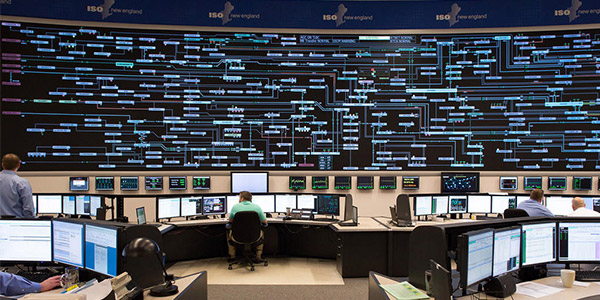The NEPOOL Participants Committee’s first working session on the “Pathways to the Future Grid” effort last week featured ISO-NE’s proposed work on market frameworks, including a long-range transmission study and examination of net carbon pricing.
The “pathways” effort is part of New England’s Future Grid Initiative, which also includes a reliability study. A stakeholder-developed framework document for that study was presented to a joint meeting of NEPOOL’s Markets and Reliability committees in December. (See New England ‘Future Grid’ Study Takes Shape.)
On Thursday, ISO-NE COO Vamsi Chadalavada discussed the RTO’s approach to conducting Phase I of the reliability study and a transmission study.
The New England States Committed on Electricity last year released a vision statement calling for ISO-NE to adopt an updated transmission planning process to help the region expand its grid to incorporate wind, hydro and distributed energy resources.
Chadalavada said the 2050 Transmission Study would develop high-level scenarios to evaluate large-scale renewable energy integration and cost estimates. It would also look far beyond the RTO’s typical 10-year horizon for transmission needs but not outline any plans for specific projects.
He also said ISO-NE will analyze implementing a Forward Clean Energy Market (FCEM) or Integrated Clean Capacity Market as well as net carbon pricing, ideas Rutgers University professor Frank Felder presented to the Participants Committee in January. (See Report Outlines NEPOOL ‘Pathways’ to a Future Grid.)
The RTO has championed incorporating net carbon pricing into its market to supplement the Regional Greenhouse Gas Initiative (RGGI) carbon price, but states adamantly oppose such a move.
Net carbon pricing would require stakeholders to agree on a social cost of carbon, from which the RGGI price would be subtracted. ISO-NE would then charge emitting generators the resulting additional cost of carbon and rebate associated revenues back to load-serving entities.
The plan would mitigate — but not completely solve — the double payment issue that arises when clean resources earn payments from both subsidies and market revenues. It would also reduce states’ ability to control the specific timing and type of clean energy resources to meet their individual policy objectives — and additionally fails to explicitly address the balancing resource issue.
ISO-NE expects to provide more details on a potential net carbon pricing framework at the March working group meeting, according to Chris Geissler, economist for the grid operator.
The RTO also expects to complete the four analyses and studies by the first quarter of 2022. It has dedicated resources and budget to work with stakeholders to finalize scope and assumptions, develop models and run simulations, then present and discuss results of the four efforts, Chadalavada said.
But while ISO-NE could perform that work and respond to FERC orders, the complete effort could significantly strain the RTO’s operating budget, Chadalavada said. If new priorities emerge, the RTO would seek to rebalance its work and discuss that with stakeholders, he said.
Chadalavada concluded that Phase II of the reliability study would require modeling improvements. Inverter technology is rapidly evolving from “grid following” to “grid forming,” and the RTO has been working with NERC and industry vendors to develop and test the necessary models and tools.
Chadalavada said ISO-NE thinks it prudent to let some of these efforts mature before engaging in a longer-term system security study that would be part of Phase II. The pathway analyses will require building at least two models, one each for net carbon pricing and FCEM. This should determine how the Minimum Offer Price Rule (MOPR) will be treated in the modeling assumptions to assess how it affects the proposed frameworks’ outcomes. FERC has recently made clear that addressing the MOPR is one of its top priorities.




